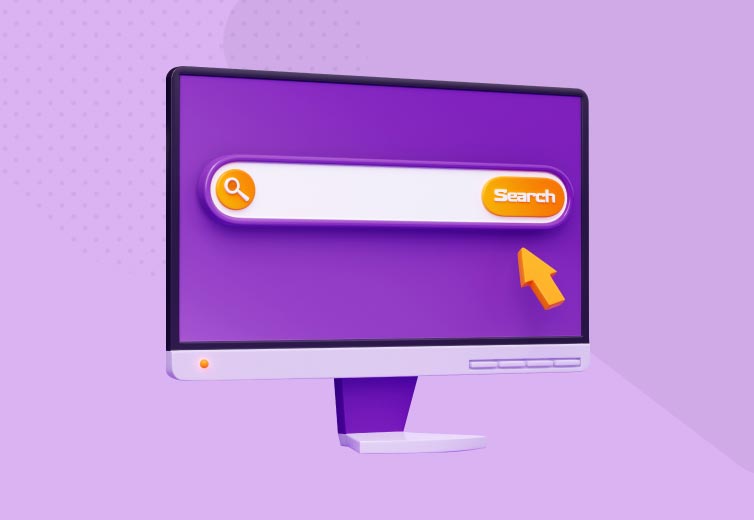Personalized Search And More: Working Towards Providing The Best User Experience
-
Aaron Gray
-
April 26 , 2023
-
5 min read

In June 2005, Google rolled out three updates for its search engine: Personalized Search, Google Mobile Web Search, and Sitemaps. All changes were focused on improving user experience with the last as a web development tool for webmasters. Although these didn’t have a significant impact on the algorithm, they did lead to enhancements on web crawling and search results.
What’s It For
The team enhanced their Personalized Search feature by tapping directly into users’ search histories and automatically adjusting results in line with your previous queries or topics. Before this update, users had to go to the settings menu and customize according to their preferences. With this, the SERPs are refined based on your searching and browsing habits.
Next, in a move toward improving user experience, Google rolled out Mobile Web Search to allow users to type in queries through their smartphones. This feature would pave the way for a separate mobile-first index today.
Google Sitemaps, on the other hand, allows webmasters to create XML files with the URLs they want search bots to crawl through. It can also contain details such as the date when the page was last modified and the extent of those changes. This initiative was developed to facilitate web crawling and index all available information on the web for better search results.
What Were Its Effects
The Personalized and Mobile Web Search, as well as Sitemaps, are considered as the precursors to today’s more sophisticated search engine. Sometimes, it’s even creepy how Google predicts what you’ll be searching for next based on your past queries. Nonetheless, these have definitely improved each user’s experience in looking up information by trying to help you craft your question with the appropriate search terms to give you the right data. As a webmaster, you can make sure that your website is one of the first few links that pops up for relevant keywords using sitemaps.
What It Means for You
Last March 2018, Google announced that it has begun to prioritize its mobile-first index to cater to today’s primarily mobile users. This type of indexing means that the search engine will use the mobile version of the page to index and rank your site. There’s still a single index, but it will emphasize mobile versions of content.
Here are the ways that you can optimize your website for viewing on any device and help search engines understand each section:
- Opt for Responsive Web Design – A responsive web design is one that serves the same HTML codes on a particular URL regardless of what device a user is viewing it from while still accommodating the display preference for that screen size. It’s Google’s recommended design pattern.
- Go for Dynamic Serving – With dynamic serving, your site still uses the same URL for any smartphone or tablet, but produces a separate version of HTML for different device types according to the user’s browser.
- Try Using Separate URLs – You create different codes on separate URLs that cater to each type of device. It works by detecting if the user is using a smartphone or tablet and redirecting them to the right page through HTTP redirects. This configuration seems to take more effort and may even lead to lower site speed.
Remember to notify Google that you have formatted your pages for mobile viewing. This enables the search engine to serve your content to mobile searchers accurately. Also, keep your resources crawlable by removing any code that may hinder Google’s bots from going through your web files.
Meanwhile, sitemaps are still being used by the search engine today. It has also been refined to cater to the evolving needs of users. Having a sitemap for your website can help your SEO strategies if:
- You use dynamic serving on some pages on your site.
- You don’t have a well-structured or well-linked website.
- You only have a few external links.
- Your site just got live recently.
- You have an extensive website with lots of archived content.
Other things to remember:
- XML Sitemap Formatting – if you’re using a website content management system or CMS that allows you to generate an XML sitemap automatically, you should go through the output and ensure that it has the appropriate format like Google’s mandate of adhering to Sitemap Protocol 0.9. Plus, you have to be sure that it’s error-free.
- Sitemap Verification – After creating the sitemap and hosting it on your server, you have to verify it with search engines. Google Webmaster Tools allow you to submit it to them quickly.

Conclusion
Google’s updates in June 2005 focused on enhancing user experience and web crawling with features like Personalized Search, Mobile Web Search, and Sitemaps. These updates laid the groundwork for today’s advanced search engine capabilities. Users benefit from personalized search results, while webmasters can improve visibility and user experience by optimizing for mobile and using sitemaps. Staying updated on these practices is crucial for navigating the evolving online search landscape.



